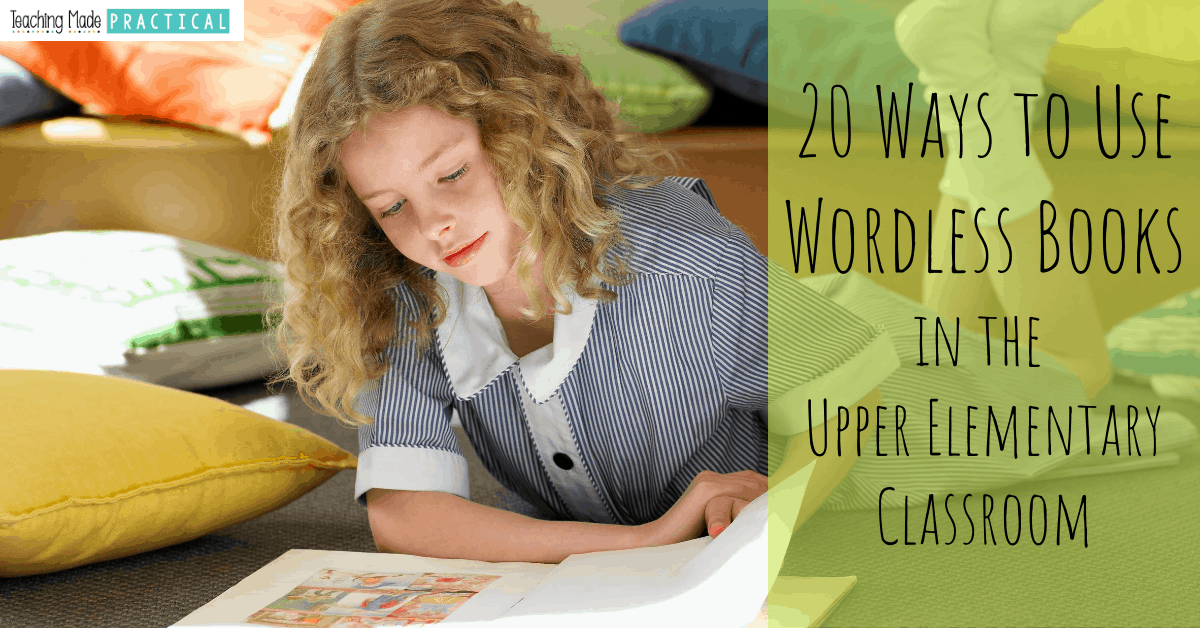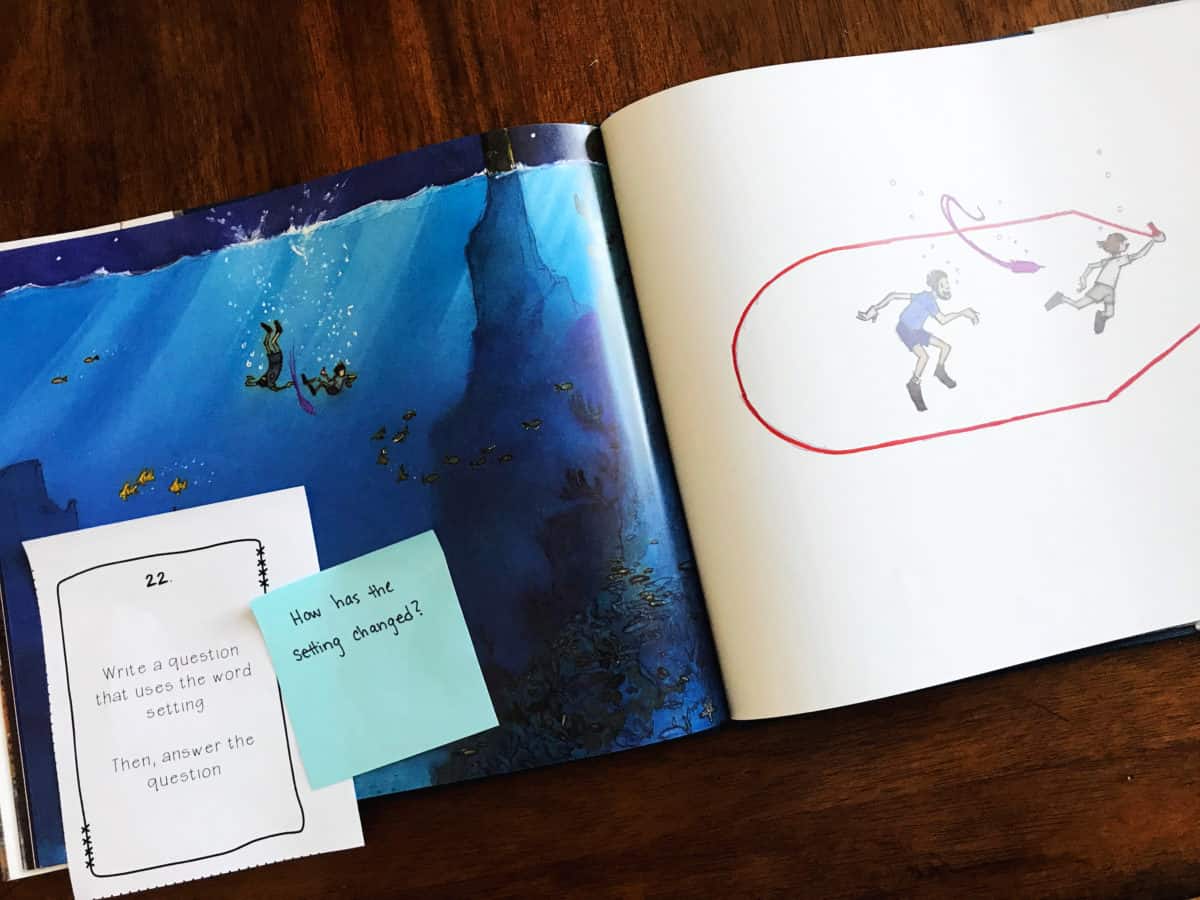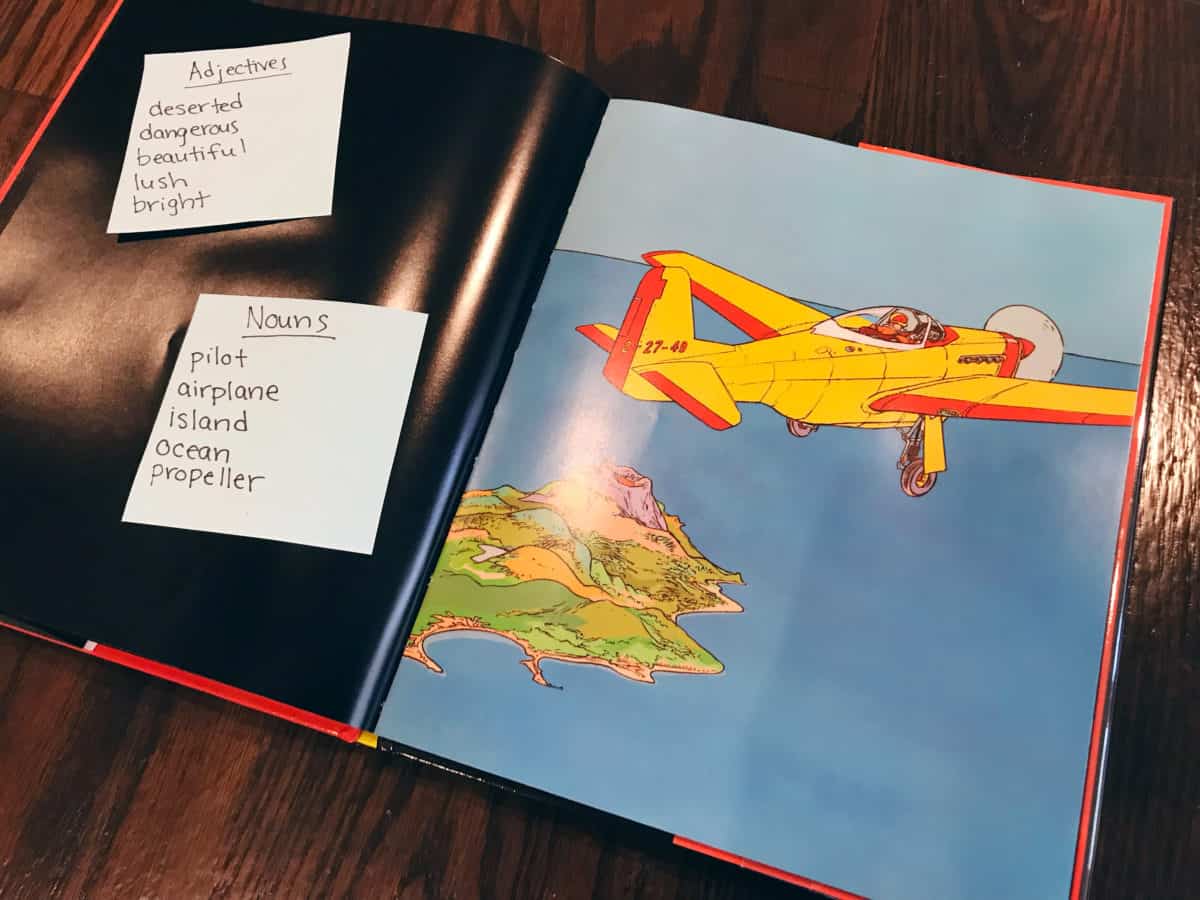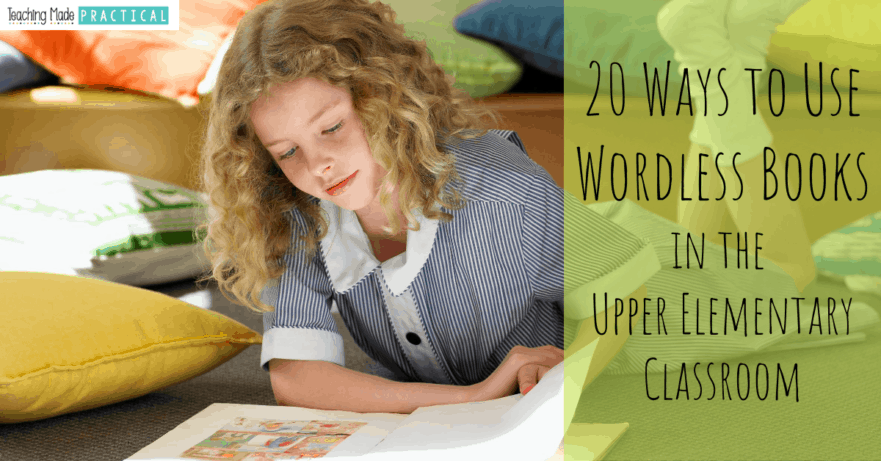
Wordless books are often overlooked in 3rd grade, 4th grade, and 5th grade classrooms, and understandably so. We need our students to be reading as much as possible, so taking the time to have students "read" wordless books can feel like a waste of a lesson.
However, wordless books can be used effectively in upper elementary to practice a variety of ELA skills. And because of their novelty, including a wordless book in your lesson plans throughout the school year or near the end of the year, after testing, can increase student engagement!
Below are some activities and ideas for using wordless books to practice reading skills, writing skills, language skills, and speaking and listening skills. Not sure what wordless books are appropriate for 3rd, 4th, and 5th graders? Check out some of my favorites.
Reading Activity Ideas Using Wordless Books
Introducing and practicing important reading skills using wordless books instead of text can be especially helpful for your struggling readers or ELL students. They can practice these skills without the frustration of decoding words.
- Introduce Story Elements: Teach students about different story elements like characters, setting, problems, solutions, plot, etc. using pictures that tell a story. This is particularly helpful for your struggling readers, who can learn about story elements without being bogged down by reading text.
- Practice Summarizing: Once again, wordless books can help struggling readers practice an important skill. Use wordless books to teach students about what details should be included in summaries, and what details should not be included. You can model summarizing for your students, or you can have your students practice writing or giving oral summaries.
- Make Inferences and Predictions: Wordless books are a GREAT way to have students practice making inferences or predictions. Students have to use clues from the pictures to infer what is happening in the story. Students can also use picture clues to make predictions about what will happen on the next page.
- Have Students Ask and Answer Questions: Give students question stems and have them ask different questions about the story. They can answer the questions themselves or have a partner answer the questions! (These tips for teaching students to ask meaningful questions can help.)
- Practice Sequencing: Struggling readers can practice retelling the important parts of the story in the correct order without stressing about words they couldn't read. As an added bonus, have 3rd, 4th, or 5th grade students practice using transitional words as they retell the story!

Practice Language Skills Using Wordless Books
Sometimes practicing language skills can get to be routine and boring for students. Adding something unusual into the mix - like a wordless book - can make practice of these skills more exciting!
- Practicing Identifying Parts of Speech: Have students "read" a wordless book and come up with nouns, verbs, adjectives, adverbs, prepositional phrases, etc. based on the pictures or plot. They could use post it notes to mark certain parts of speech or certain pages. If your students need review, this low prep Parts of Speech Resource will help.
- Review Capitalization and Punctuation Rules: Have students write sentences or paragraphs based on a picture in the book or the plot, making sure to use correct grammar.
- Practice Building Compound and Complex Sentences: Use the wordless book as inspiration for writing compound and complex sentences. Model this during a lesson to your students before having them create their own sentences.
- Practice Writing Dialogue and Dialogue Punctuation Rules: Have upper elementary students imagine what different characters might be saying and write their own dialogue for the characters.
- Review Old Vocabulary Words: Have students "read" the story, trying to include as many past vocabulary words in their telling as possible! (Check out these other no prep ways to practice vocabulary.)
- Build New Vocabulary: Use post it notes to label the pictures in the wordless book. You can use a thesaurus to include synonyms and introduce students to new words. This is an especially great activity for ELL students!
- Practice Using Figurative Language: Have students use similes, metaphors, alliteration, onomatopoeia, and other figurative language as they "read" the book or describe what is happening on a certain page. Use these posters to introduce figurative language if you haven't already!

Writing Activity Ideas Using Wordless Books
Wordless books make a great jumping off point for reluctant writers! If you have students that never know what to write about (and who doesn't?), then try out some of these activity ideas.
- Write out your own story based on the wordless book: After "reading" the book, have students write down what happened. Encourage them to include all the important characters, settings, and important events.
- Practice Descriptive Writing: Have students choose a page in the book and describe it. Encourage them to use precise language and descriptive adjectives.
- Rewrite the Ending/Write a Sequel: Have students integrate their own point of view into the wordless book's story. They can change up the ending or write a sequel to the story.
- Write a Poem: For your more advanced students, challenge them to write out the story in poetry form. Encourage them to use some of these different types of poems. And then you could have a poetry slam!
- Practice Writing Sentences of Varying Length: Have students write out what is happening in the wordless book using specific parameters. For example, have them describe what is happening on a certain page in 6 words, or 10 words, or 15 words. This makes them think carefully about what words they are choosing.
Looking for other ways to make writing fun? Check these ideas out.
Speaking and Listening Lessons Using Wordless Books
Most of the activities above could also be used to practice speaking and listening skills. For example, students can practice summarizing verbally instead of writing it down. But the ideas below are other ways to practice speaking and listening standards using wordless books.
- Record Students "Reading" the Wordless Book: Have students tell the story in their own words and record it for others to listen to! Encourage students to speak clearly, add interesting details, and think about their tone of voice.
- Have Partners Trade Off Telling the Story: As partners "read" the wordless book aloud, have them trade off every page. Students will practice listening to their partner and responding and appropriately, as well as speaking.
- Compare and Contrast How 2 Different People Tell the Same Story: Have parters each "read" the wordless book using their own words. Then, have them compare and contrast how they told the story. What details did one person leave out? Did both people include dialogue?
Wordless books are often an underutilized resource! Change up your lessons by including one during your reading block.
Worried that wordless books will be too "babyish" for your 3rd, 4th, or 5th grade students? Check out these wordless books that upper elementary students will love!
Never Stress Over Sub Plans Again!

Make copies, find a fiction book, and you'll be ready for any emergency that comes your way!

